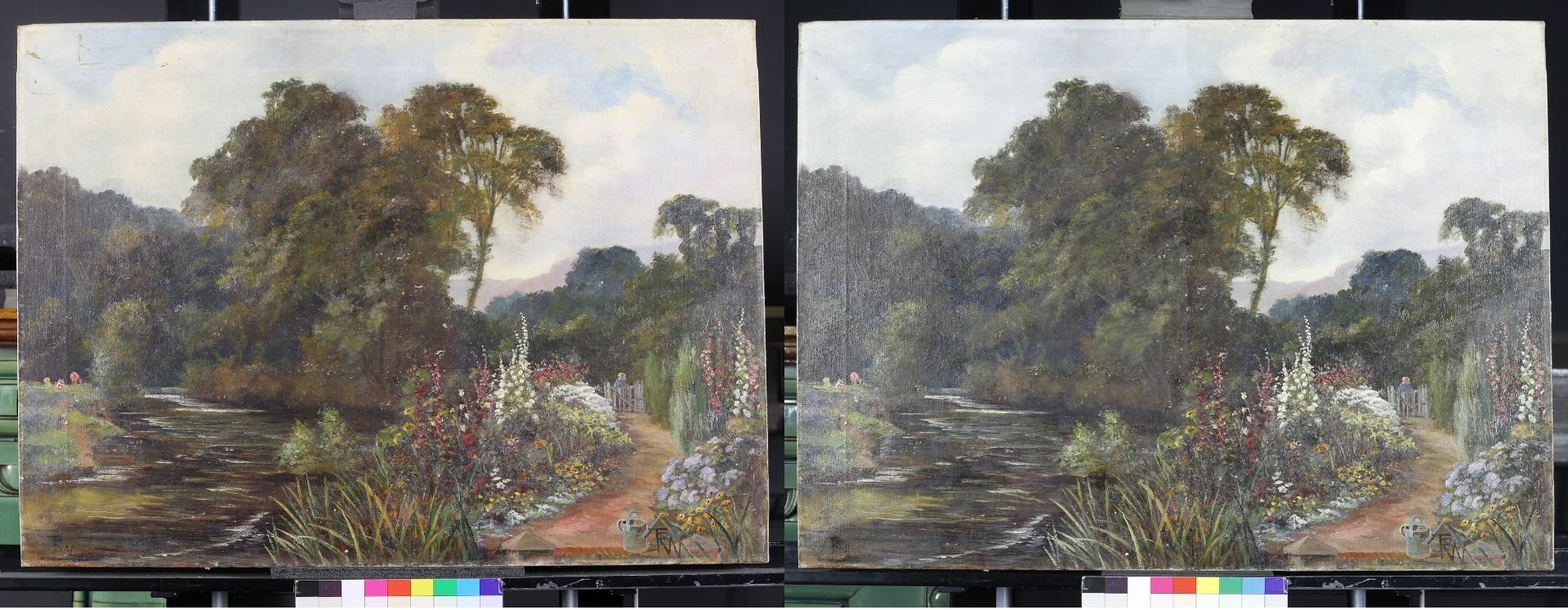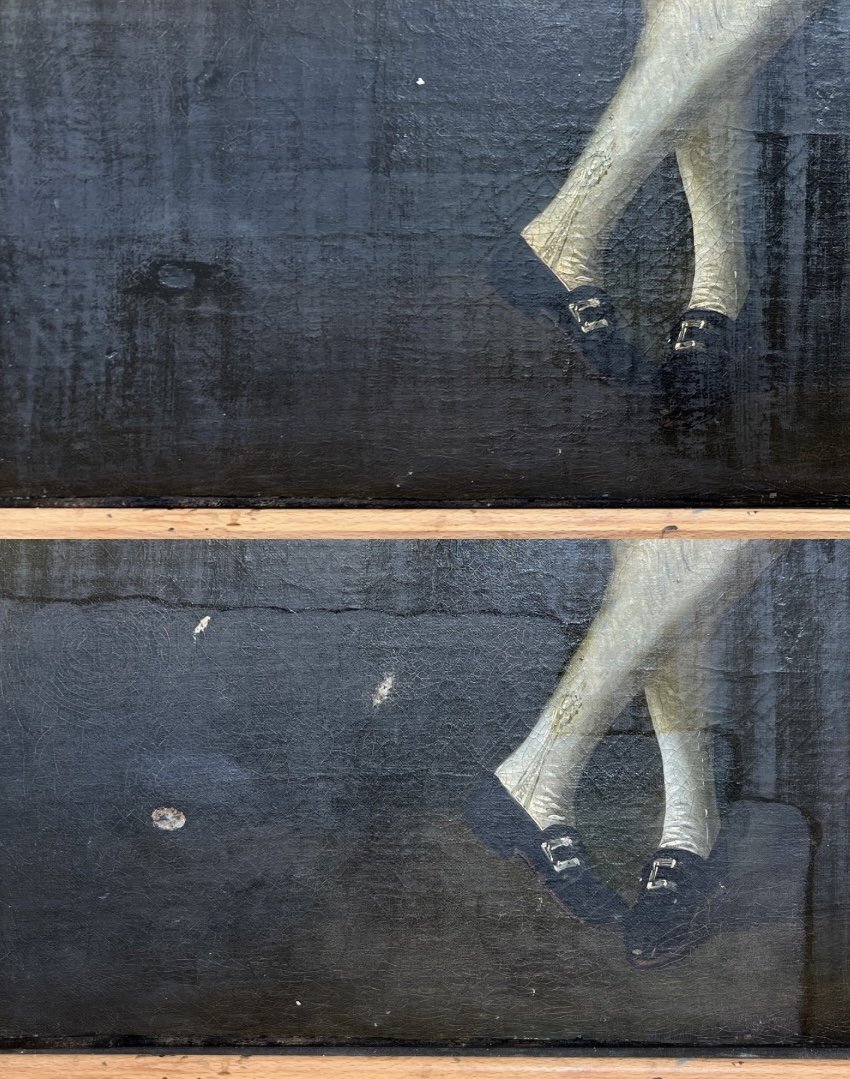The cleaning of easel paintings is a critical and often irreversible intervention that requires a thorough understanding of both the painting’s material structure and the chemistry of cleaning systems. Aqueous and solvent cleaning are two primary methods employed to remove surface dirt, discoloured varnishes, or degradation products. Aqueous cleaning typically involves the use of water-based solutions, often modified with buffers, surfactants, or chelating agents, to reduce the risk of damage to sensitive paint layers. Solvent cleaning, on the other hand, relies on the selective solubility of varnish and accretions in organic solvents, which can be tailored through polarity, volatility, and mixture formulation. Both approaches demand careful testing, documentation, and risk assessment to ensure the integrity of the original material is preserved.

Project Painting - Partially Cleaned (Right side)

18th Century (presumed) Oil Painting Before (top) and After (bottom) Varnish and Overpaint Removal.
